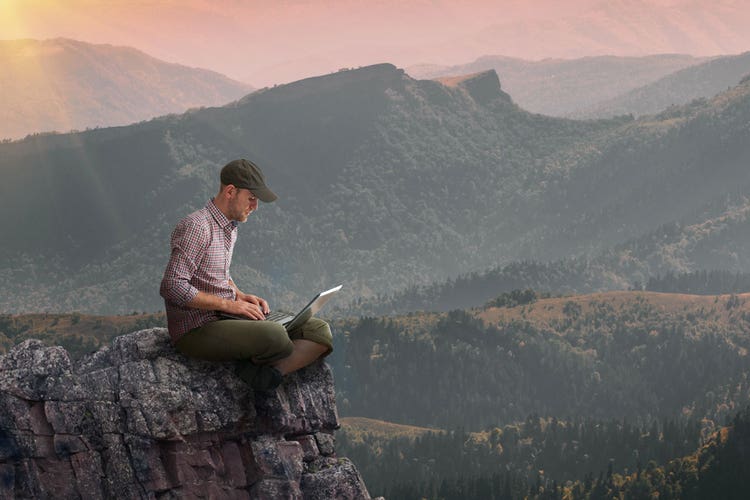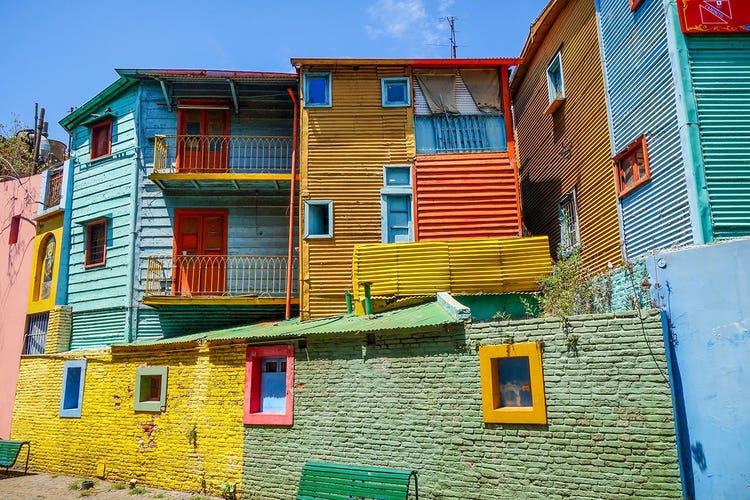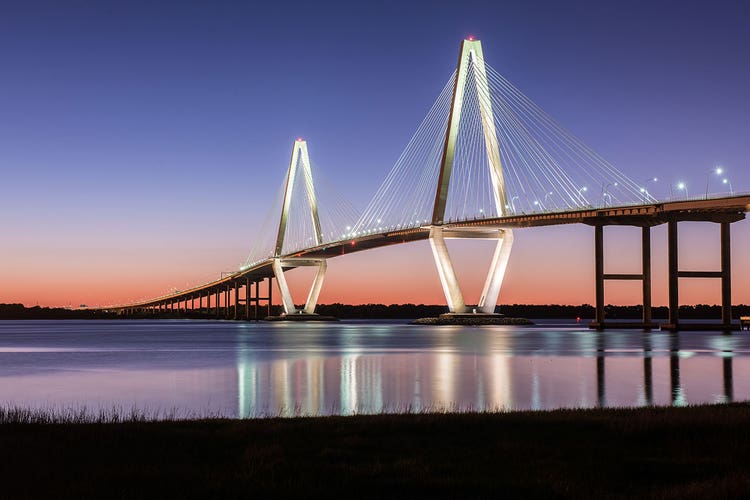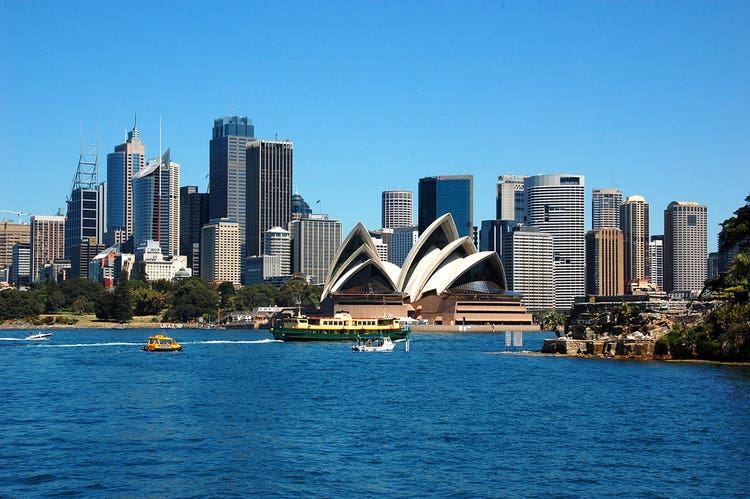It’s Easier Than Ever to Live a Life of Travel. Here’s How.

The digital nomad’s day has come.
Summer in Berlin, Brooklyn for the fall, Los Angeles for the winter—or why not Bali?
The workplace of the 21st century is different from those that have come before, in ways that are good and bad. Perhaps the chief good? A new openness in allowing employees to work remotely—and a professional landscape that rewards location-independent entrepreneurs more opportunities than ever before.
Life on the road isn’t always easy, as memoirist and New York Times columnist Jen A. Miller reminds us. Miller, the author of “Running: A Love Story” (Seal Press, 2016), spent two months touring the United States earlier this year; the New Jersey native will soon set up a quasi-permanent base in Colorado. “I really hated the trip when I got sick because there was nowhere I could bunker and try to get better,” she says. “Your house with your couch and your bed isn’t quite the same as a rotating cast of Holiday Inns. But when I could shake myself out of it—or shake off the head cold—it made the highs worth it.” The biggest highlight? Climbing Mauna Kea, Hawaii’s highest point. “It was cold—41 degrees—and I’d been swimming in 80-degree water earlier that day,” she says. “It was a stunning experience. It was one of those points where I realized that all the work I had done to establish myself as a freelancer was allowing me to go on that kind of adventure and see stuff like that—and not worry about punching a clock.”
Below are four more creative nomads—and how they made the leap.
Nomad: Brooke Siem
Occupation: Chef, writer and “Chopped”champion Hometown: Reno, Nevada
Current location: Buenos Aires, Argentina
Next stop: New York City

What’s been the toughest part about life as a digital nomad? Coming to the understanding that by deciding to go down this path, I had to let go of the life I was living and understand that some of the people in my previous life could not come with me. By making the choice to leave, I basically announced that I wasn’t satisfied with whatever we had in common. You learn really quickly who is willing to support you and who was someone destined only for a specific time and place.
How does it compare to life in one place? I find that one day now is basically like one week in the “real” world. Every day is all encompassing, and all your senses are illuminated. You’re tasting new food, always getting lost, and constantly trying to navigate new cultures and languages. Even if you’re just going to the grocery store or trying to find the gym, it’s not a mindless and automatic process—so you’re never bored and it makes the days feel full. But you’re also constantly uncomfortable, which causes a sort of incomparable exhaustion that grates on your creativity and mindset.
Do you recommend it? Remote work shouldn’t be romanticized, and it’s definitely not for everyone. Those photos you see of people “working” in hammocks on the beach in Thailand or next to a pool in Greece? They’re probably bullshit, just like everything else on Instagram. Hammocks are not comfortable to work in, and no smart remote worker is going to risk getting their laptop wet just to work by a pool.
Nomad: Kristina Dahl
Occupation: Founder, Kits and Crafts and Wander & Thrive; remote work as bill processor for a meeting-planning company
Hometown: Tucson, Arizona
Current location: Charleston, South Carolina
Next stop: Disney World

Why did you make the move to a digital nomad lifestyle? I had a corporate job that was very stressful. I called myself a “mom-bie”—I was exhausted. I was able to transition my full-time work to a remote position, on my schedule. I also had a T-shirt business on Etsy, and when we realized we could travel more, we moved from T-shirts to selling digital files for crafters.
Has it been worth it? Most days, yes. We had a goal to make it to the Atlantic Ocean this year, and just last week, we drove into Charleston—we couldn’t wait to drive to the beach. We stepped on the sand and put our feet in the ocean. My husband and I looked at each other and said, “This does not suck.”
What are some of the best places you’ve been? Standing on the Going to the Sun Road in Glacier National Park in the rain as the clouds rose up along the mountainside and enveloped the road. I’ve fallen in love with the Oregon Coast. I was even overjoyed to spot a moose in Colorado. The best part is being able to do it with my family—seeing new things through my daughter’s eyes brings me great joy.
Nomad: Emily MonacoOccupation: Writer, translator and tour guide
Hometown: New York City
Current location: Paris
Next stop: Languedoc-Roussillon in the South of France, followed by the Côte d’Azur

How did you make the transition from office worker to nomad? I became a salaried employee briefly—and under duress—in 2013 so that I could stay in France, but I was always freelancing on the side, which meant that I was working “full time” both in an office and at home. I used my lunch break, evenings and weekends to build my freelance business. Eventually, I was making more at my freelance gig than at my “real-person job,” and I gave notice.
What’s the toughest part of the gig? Because I travel so much, I always work when I travel. This means I never get a “real” vacation and very rarely turn off all my devices.
Give me a moment when you thought, “All the trouble is totally worth it.” Last year, my father was going through a tough time, and it was really nice to be able to book a flight. I knew I could take as much time as I needed to be with him and my work wouldn’t suffer.
Nomad: Jade Maitre
Occupation: Founder, Storyberries
Hometown: Montclus, France
Current location: Sydney
Next stop: TBD. “I’m touring the East Coast of Australia looking for a new base.”

How do you describe what you do? I find quality, free stories for kids and publish them online for people to access all around the world—we have more than a million reads a month!
You were a lawyer at one point. How did you move from that to running your startup? It started with some practice runs, taking long backpacking trips every few years and working in between. After having children, my husband and I sold everything and set off to South America—only this time we had a clearer idea about wanting to find a way of working creatively full time. We started with one company, and then I used the skills I learned at that one to build Storyberries from the ground up.
What’s the biggest downside to working remotely? Everything you create is down to the energy you put into it. This is both a negative and a positive. You really have to be fully motivated all the time to get the best from your work, since there’s no one responsible but you. You also need to have a lot of patience—you can’t set up a popular website in months, so there’s no quick satisfaction. However, you can work away at it knowing that you’ll see it bear fruit due to the things you do today.
Photo credit: andreusK, Adobe Stock; daboost, Adobe Stock; LeeAnn, Adobe Stock; TTstudio, Adobe Stock; magspace, Adobe Stock